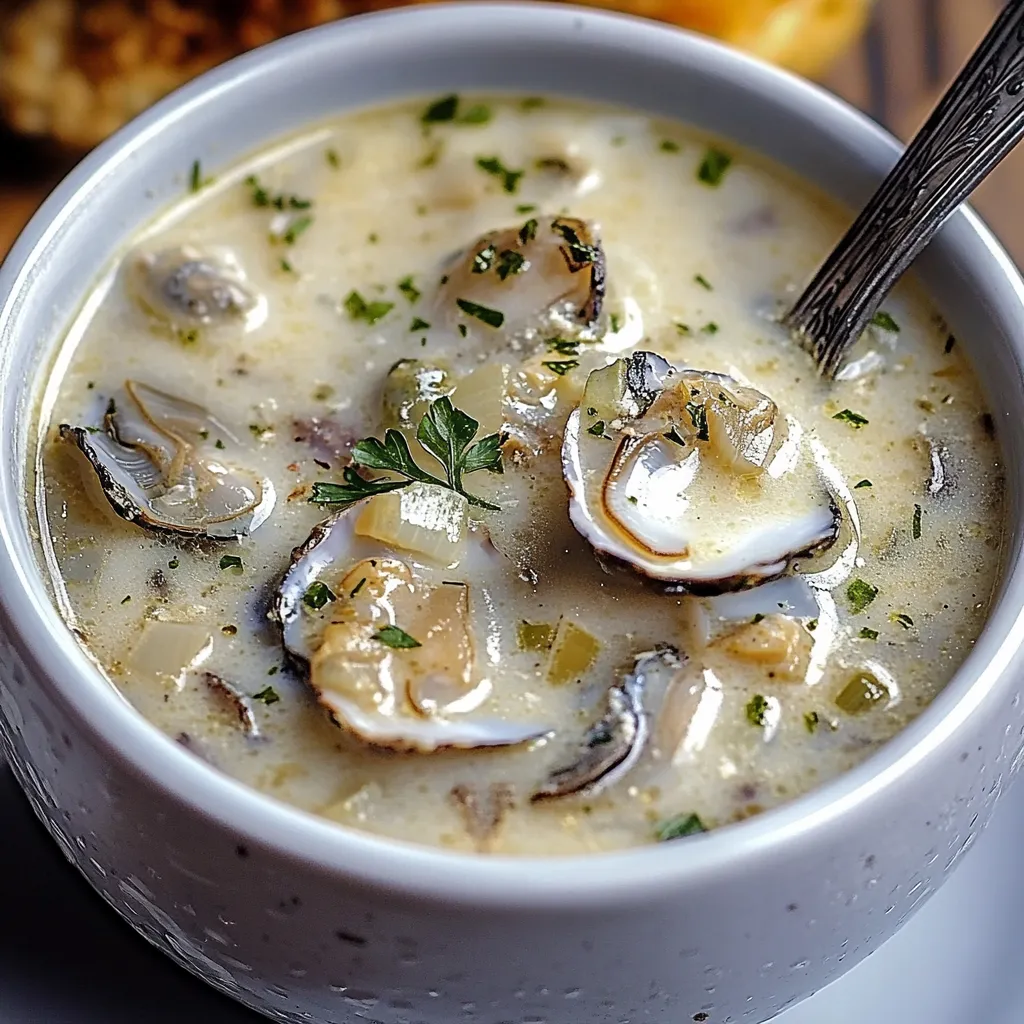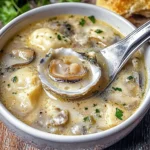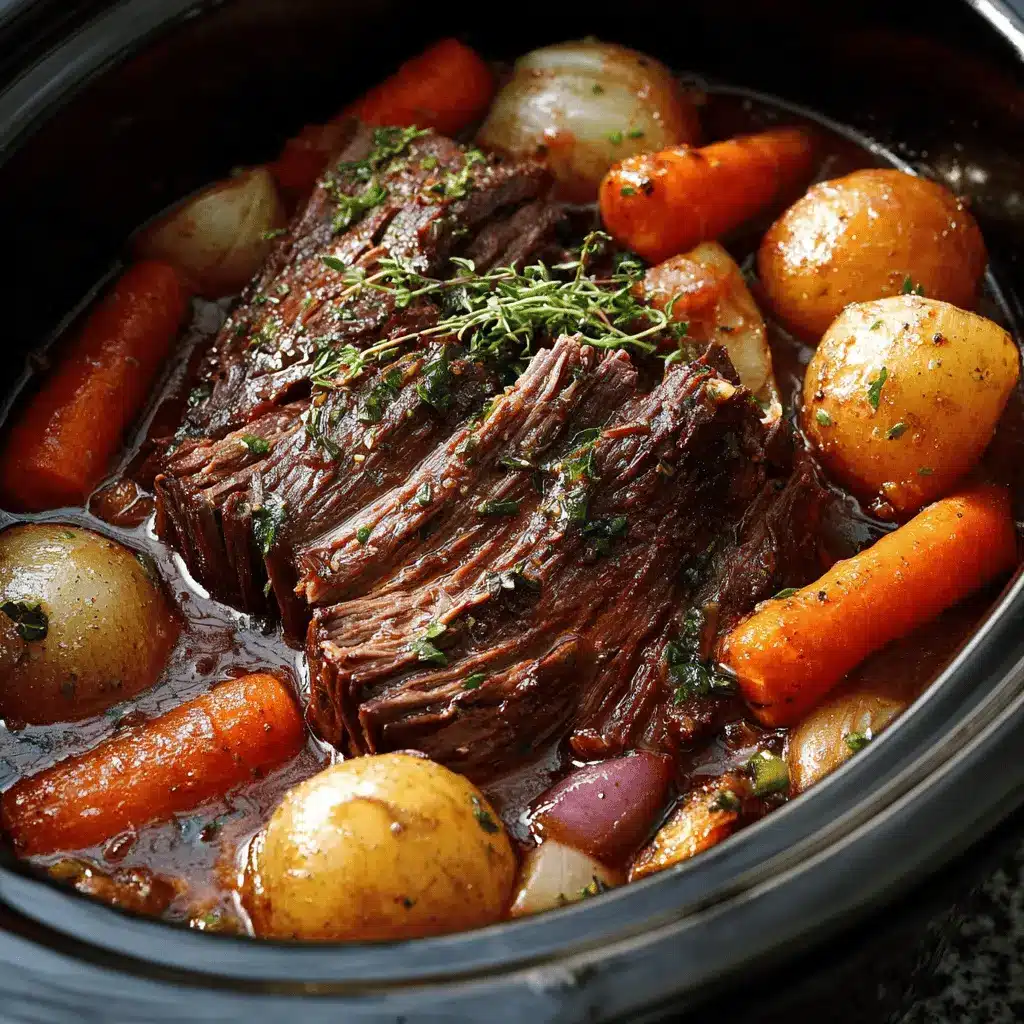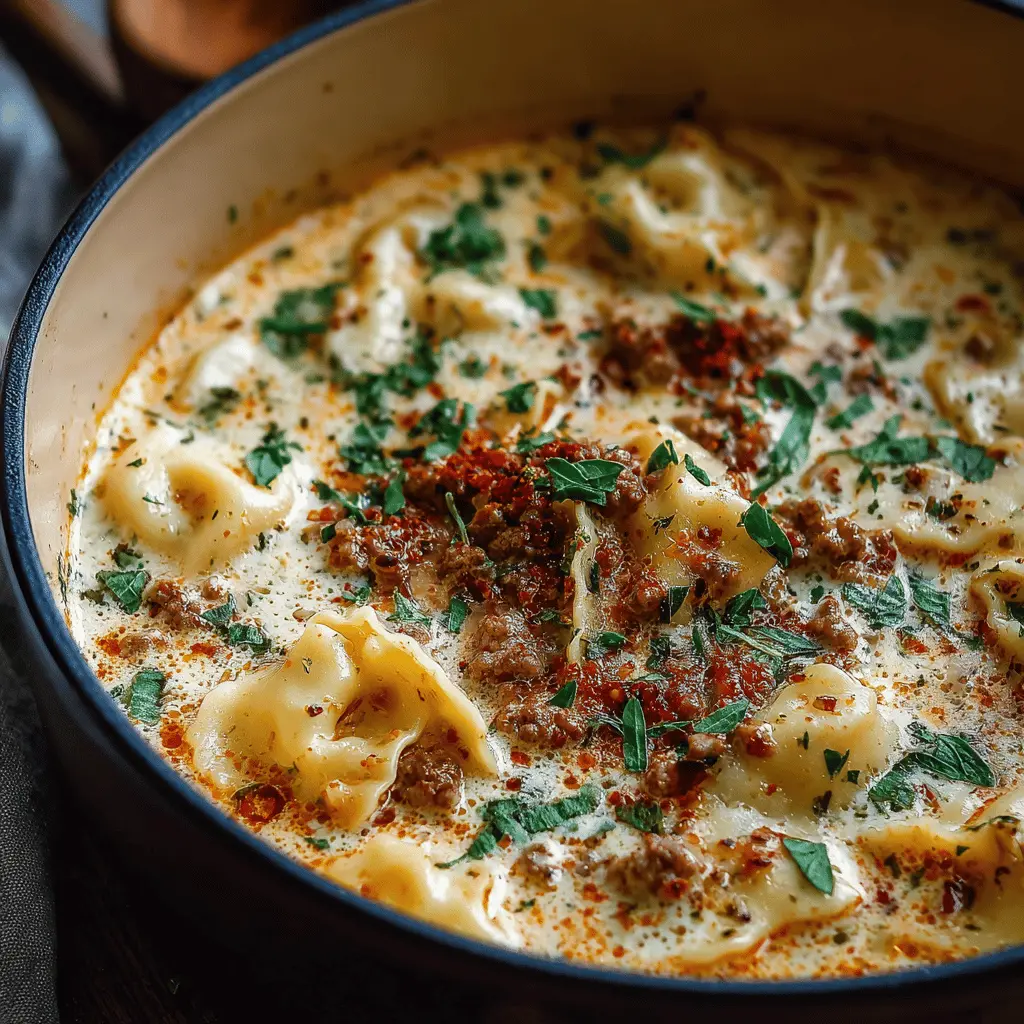There’s something magical about a bowl of oyster stew. It’s creamy, briny, and soothing—like a warm hug on a cold winter’s day. If you’ve never made it at home, don’t worry. This Oyster Stew Recipe is incredibly simple, deeply flavorful, and comes together in less than 30 minutes. Whether you’re a seafood lover or just looking for a cozy soup to sip by the fire, this one checks all the boxes.
Oyster stew has a long-standing tradition in many families, especially during Christmas Eve and New Year’s celebrations. It’s a dish that feels both luxurious and nostalgic, with roots in Southern cooking and coastal kitchens alike. What makes this version so special is how effortlessly it combines rich creaminess with the delicate ocean taste of oysters—without being overly heavy.
You don’t need fancy equipment or exotic ingredients, either. Just a few kitchen staples, a pot, and some good-quality oysters, and you’re on your way to creating a stew that feels like it came from a high-end seafood restaurant. Whether you’re making it for a holiday gathering or a weeknight treat, this recipe is one you’ll come back to again and again.
Why You’ll Love This Oyster Stew Recipe
Key Benefits
This stew isn’t just comforting—it’s incredibly easy to make, which is a big win when time is tight or you’re juggling holiday prep. From start to finish, it takes under half an hour, but the flavor is anything but rushed.
You can also tailor the flavor to your liking. Like a little heat? Add a touch of Old Bay or a dash of cayenne. Prefer it mild and creamy? Keep it simple and classic. The base is neutral enough to make your own, but rich enough to stand alone.
And perhaps best of all—it uses ingredients you probably already have in your kitchen: butter, garlic, milk, and broth. No fancy seafood stock required (unless you want to level up). That means less shopping, less stress, and more time to enjoy your stew.
Suitable For
This oyster stew is the ultimate comfort food for seafood lovers. It’s a go-to for holiday dinners—especially Christmas Eve—and it’s perfect for cozy winter nights when you want something indulgent but not too complicated.
It’s also great for beginners. If you’ve never cooked with oysters before, this is the ideal place to start. The stew is forgiving, easy to adjust, and a great introduction to using seafood in soups.
Whether you’re feeding a crowd or just making dinner for two, it adapts beautifully and always impresses.
Ingredients for Oyster Stew

Core Ingredients
Let’s keep it simple and satisfying. Here’s what you’ll need:
-
Fresh oysters (or canned, drained, and rinsed): These are the star of the show. If using fresh, don’t toss the liquor (that briny juice)—it adds a ton of flavor.
-
Unsalted butter: For richness and to sauté the aromatics.
-
Onion and garlic: Build that flavorful base.
-
Whole milk and heavy cream: The combination creates a velvety texture without being too heavy.
-
Chicken broth or seafood stock: Adds depth—use seafood stock for more of that coastal flavor.
-
Seasonings: A pinch of salt and pepper is a must. Add Old Bay or a sprinkle of paprika if you’re in the mood for something extra.
-
Garnish: Fresh parsley or chives for a little color and freshness, and lemon wedges to brighten things up.
Substitutions and Tips
-
Half-and-half works beautifully if you don’t have both milk and cream on hand. It’ll still be luscious.
-
Seafood stock gives you a bolder, more authentic ocean taste—perfect for oyster lovers.
-
Want to stretch the flavor even more? Add celery, carrots, or even leeks to the mix for extra layers of savory goodness.
This stew is flexible, so feel free to experiment based on what you have in the fridge or pantry. It’s the kind of recipe that welcomes personal touches.
Best Oysters for Oyster Stew
Not all oysters are created equal, and choosing the right kind makes a big difference.
Blue Point and Pacific oysters are great choices—they’re tender, briny, and easy to find. If you’re using fresh oysters, make sure they smell clean and salty, like the ocean. That’s a sign of freshness. The liquor inside the shell is liquid gold for your stew, so don’t pour it out!
If you’re going with canned oysters, no worries—they work well too. Just rinse them gently and pat them dry to remove any metallic aftertaste. Some canned oysters are smoked, which can add a unique depth if that’s your thing, but for a classic stew, stick with plain.
Shucking oysters might seem intimidating, but with an oyster knife and a little practice, it’s totally doable. If not, many seafood counters will do the shucking for you—just ask. And if convenience is key, canned is a perfectly delicious shortcut.
Kitchen Tools You’ll Need
Must-Have Tools
-
Large Dutch oven or soup pot: You’ll need something sturdy and deep enough to simmer your stew without spilling over.
-
Strainer: Especially useful if you’re using fresh oysters and want to catch any shell fragments from the liquor.
-
Wooden spoon or spatula: Great for stirring gently without breaking up the oysters.
Nice-to-Have Tools
-
Ladle: Makes serving the stew into bowls neat and easy.
-
Immersion blender: Not essential, but nice if you like a super-smooth base before adding the oysters.
-
Oyster knife: A must if you’re shucking fresh oysters at home.
No fancy kitchen gear here—just the basics, plus a few extras if you want to level up your stew game.
How to Make Oyster Stew (Step-by-Step Guide)

Making oyster stew at home is easier than you might think—and so worth it. With just a few simple steps, you’ll be enjoying a creamy, flavorful bowl of coastal comfort in no time. Here’s exactly how to do it:
Step 1: Prepare the Oysters
If you’re using fresh oysters, start by gently draining them over a bowl to catch the liquor (that’s the briny liquid they come in—it’s packed with flavor). Strain the liquor through a fine mesh sieve if needed to remove any shell bits. If your oysters are large, feel free to chop them into smaller pieces for easier eating.
Using canned oysters? Just rinse them under cold water to wash away any metallic taste, then drain well. You can still use the liquor if it tastes fresh and clean.
Step 2: Cook the Aromatics
In a large Dutch oven or soup pot, melt the butter over medium heat. Once it’s bubbling and fragrant, toss in the finely chopped onion and minced garlic. Cook for about 3–4 minutes, stirring often, until the onion becomes soft and translucent and the garlic smells amazing. This step builds the foundation of flavor, so don’t rush it.
Step 3: Add the Liquids
Now it’s time to bring the creaminess. Pour in the whole milk, heavy cream, and chicken broth (or seafood stock if you’re going for a bolder seafood flavor). Stir everything together well and let it heat gently over medium-low heat. You want it to simmer, not boil—just a few bubbles around the edges is perfect. Let it cook for 5–7 minutes to let the flavors start mingling.
Step 4: Add the Oysters
Gently stir in your oysters and the reserved liquor. Keep the heat low and let the stew simmer gently for another 3–5 minutes. Watch the oysters closely—when their edges start to curl, they’re done. Overcooked oysters can get rubbery, so resist the urge to walk away during this part.
Step 5: Season and Serve
Taste the stew and adjust the seasoning with salt, black pepper, and any extras like Old Bay or paprika if you’re using them. Ladle into warm bowls and top with a sprinkle of chopped parsley or chives. Add a lemon wedge on the side for a bright pop, and serve with crusty bread or saltine crackers for dipping.
That’s it—simple, satisfying, and so flavorful.
Tips for Success
Oyster stew is simple, but a few small tricks will help you get it just right every time.
Keep the heat gentle. Dairy doesn’t like to boil, especially cream. A full boil can cause the mixture to split or curdle, which nobody wants in a creamy soup.
Watch the oysters like a hawk. They only need a few minutes to cook—just until the edges curl. That’s your sign to pull the pot off the heat. Any longer and they can go from tender to chewy in a flash.
Taste and tweak. Before serving, give your stew a quick taste. Sometimes it needs just a pinch more salt, or a dash of hot sauce to bring everything to life.
Want to dress things up? A splash of Worcestershire sauce, a few drops of Tabasco, or a pinch of cayenne pepper can add just the right amount of kick. And if you’re feeling a little extra, try adding some thinly sliced leeks or celery during the sauté step for an added layer of flavor.
Remember, the beauty of oyster stew is in its simplicity. Start with a great base and build it the way you love.
How to Store Oyster Stew

Making a pot of oyster stew is wonderful, but knowing how to store it properly is just as important—especially if you’re cooking ahead or managing leftovers.
At Room Temperature
Once your stew is done, don’t let it sit out for more than two hours. Because it’s made with dairy and seafood, it’s especially sensitive to temperature. After serving, let it cool slightly, then transfer it to storage.
In the Refrigerator
For short-term storage, place leftover stew in an airtight container and keep it in the fridge. It will stay fresh for 2 to 3 days. When you’re ready to enjoy it again, reheat gently on the stovetop over low heat, stirring often. Avoid high heat, which can cause the cream to separate and the oysters to overcook.
Freezing Tips
Freezing oyster stew can be tricky because of the cream and oysters. The best approach is to freeze the base only—before adding the oysters and cream. Once reheated, you can stir in fresh oysters and cream just before serving. This method helps preserve the stew’s smooth texture and keeps the oysters from becoming tough or rubbery.
Planning ahead a bit makes all the difference for a perfect second serving.
Frequently Asked Questions (FAQs)
Can I make oyster stew ahead of time?
Yes, but it’s definitely best served fresh. If you do make it ahead, store it in the fridge and reheat slowly over low heat. That gentle approach helps keep the cream from curdling and the oysters from overcooking.
Can I use canned oysters?
Absolutely. Canned oysters are a great shortcut, especially when fresh oysters aren’t available. Just be sure to rinse and drain them well to remove any metallic taste. They’re softer than fresh oysters, but they still work beautifully in this stew.
How do I thicken my oyster stew?
This stew should have a naturally rich, creamy consistency. If you like it thicker, let it simmer uncovered a bit longer to reduce. You can also whisk a teaspoon of cornstarch with a bit of cold broth or milk, then stir it in—but go slow. You want silky, not overly thick.
What do I serve with oyster stew?
A slice of crusty bread or a handful of oyster crackers is classic. Add a simple salad for something fresh, or a lemon wedge to brighten things up. It’s also wonderful with a glass of crisp white wine or sparkling water with citrus.
Why are my oysters rubbery?
Oysters only need a few minutes to cook. Once their edges start to curl, they’re ready. Overcooking is the most common reason they turn rubbery—so keep a close eye on the pot during those final minutes.
Related Recipes
If you loved this Oyster Stew, you might enjoy these other cozy, comforting bowls:
-
Irish Stew: A hearty, meat-based stew perfect for chilly evenings.
-
Lasagna Soup: All the flavors of lasagna in a warm, savory soup.
-
Creamy Mushroom Soup: Velvety, rich, and loaded with earthy flavor.
-
Nova Scotia Seafood Chowder: A seafood lover’s dream, filled with shrimp, scallops, and more.
-
Tom Kha Gai Soup: A Thai-inspired creamy coconut soup with a balance of tang and spice.
Conclusion
This oyster stew is the kind of dish that feels like a celebration every time you make it. With its creamy texture, briny depth, and comforting warmth, it’s no wonder it’s been a holiday staple for generations. But don’t wait for Christmas to try it—it’s quick enough for a weeknight dinner and special enough to serve to guests.
So go ahead—gather your ingredients, grab a cozy bowl, and make it your own. Whether you stick to the classic version or play around with heat, herbs, or seafood swaps, this stew is sure to earn a spot in your regular rotation.
We’d love to hear how it turns out. Leave a comment, share your tips, or post a photo of your version. This is one recipe worth passing down.
Print
The Best Oyster Stew Recipe
- Total Time: 25 minutes
- Yield: 4 servings
Description
This oyster stew is a creamy, comforting seafood soup made with milk, butter, and briny oysters. A classic for Christmas Eve and cold winter nights, it’s a simple yet elegant dish ready in under 30 minutes.
Ingredients
-
1/4 cup unsalted butter
-
1 small onion, finely chopped
-
2 cloves garlic, minced
-
1 pint fresh oysters (or canned, drained, and rinsed)
-
2 cups whole milk
-
1 cup heavy cream
-
1/2 cup chicken broth or seafood stock
-
Salt and pepper to taste
-
1/2 tsp Old Bay or Cajun seasoning (optional)
-
1/4 tsp paprika (optional)
-
Fresh parsley or chives for garnish
-
Lemon wedges (optional)
Instructions
-
Prepare oysters: Drain, reserve liquor, chop if needed.
-
Sauté aromatics: Melt butter, cook onion 3–4 min, add garlic.
-
Add liquids: Stir in milk, cream, and broth. Simmer gently.
-
Add oysters: Pour in oysters and liquor. Cook until edges curl.
-
Season and serve: Adjust salt and pepper, garnish with herbs, serve warm.
Notes
-
Don’t boil the stew—heat gently to avoid curdling.
-
Cook oysters just until they curl.
-
Spice it up with a dash of cayenne or Tabasco if desired.
- Prep Time: 10 minutes
- Cook Time: 15 minutes
- Category: Soup
- Method: Stovetop
- Cuisine: American, Southern
Nutrition
- Calories: 320
- Sugar: 6g
- Sodium: 420mg
- Fat: 24g
- Carbohydrates: 10g
- Fiber: 0g
- Protein: 10g










